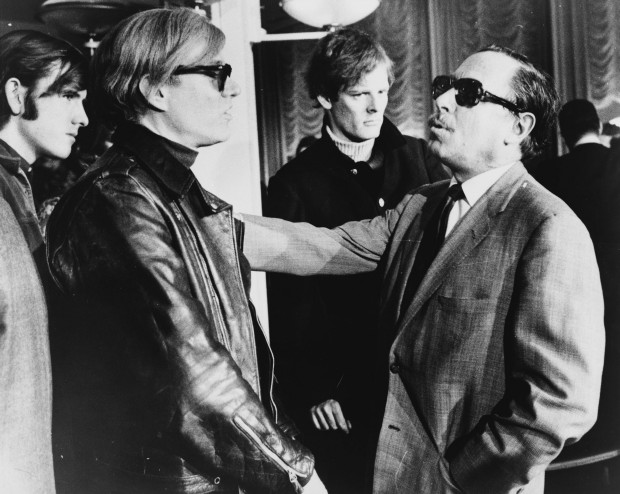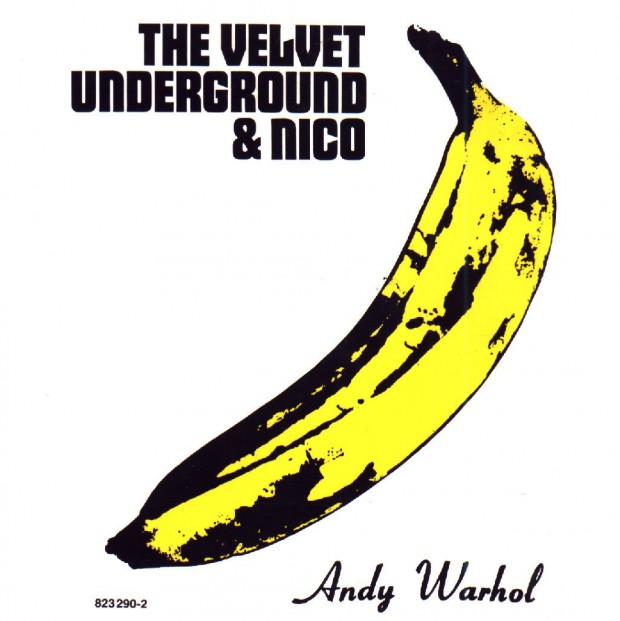앤디 워홀, 작품 대량생산으로 ‘mass-product 시대’ 풍자
* ‘아시아엔’ 연수 외국기자가 작성한 기사의 한글요약본과 원문을 함께 게재합니다.
[아시아엔=라드와 아시라프 기자·번역 최정아 기자] ‘팝아트의 제왕’ 앤디 워홀은 ‘예술의 상업화’라는 철학을 전세계에 남긴 채, 1987년 생을 마감했다. 워홀은 그의 작품을 통해 1960년대 부흥했던 예술과 패션, 광고 분야에서 뛰어난 통찰력을 드러냈다. 대중예술가로서 성공을 거둔 그는 당시로선 혁신적인 예술작품과 특이한 성격으로 호사가들의 입방아에 오르내렸다.
앤디 워홀이 남긴 작품과 그 삶의 기록은 어디서 찾아볼 수 있을까? 당신은 미국 펜실베니아 피츠버그에 위치한 ‘앤디 워홀 박물관’에서 그의 모든 것을 만날 수 있다. 예술가 단 한명의 작품만을 전시한 박물관으로는 미국 최대 규모다. 이 박물관을 방문하는 관람객들이 ‘워홀이 살아생전 이 곳에서 살았을 것’이라고 착각할 정도로 워홀의 모든 것을 완벽히 구비해뒀다. 자신의 삶이 기록되고 보존돼야 한다고 생각했던 워홀의 유지를 반영한 탓이다.
워홀은 핸드 드로잉, 회화, 프린팅, 실크 스크리닝(silk screening), 조각, 영화, 음악 등 다양한 기법과 매체를 활용해 작품을 만들었다. ‘컴퓨터 예술’의 선구자이기도 한 그는 1984년 처음 등장한 ‘아미가 컴퓨터’를 이용해 자신만의 예술을 창조했다. 사망 2년 전, 잡지 ‘인터뷰 매거진’(Interview Magazine)을 창간했고, <앤디워홀과 팝아트의 철학>(The Philosophy of Andy Warhol and Popism: The Warhol Sixties) 등의 서적을 집필했다. 그는 다양한 장르의 예술인과도 콜라보레이션을 진행했는데, 그 중 대표적인 사례가 록밴드 ‘벨벳언더그라운드’다. 그는 ‘벨벳언더그라운드&니코’ 앨범을 프로듀싱하며 커버도 직접 그렸는데, 이 음반과 커버는 지금까지도 회자되는 명작이다.
앤디 워홀의 작품에 흔히 볼 수 있는 것이 있다. 바로 특정 인물 혹은 사물의 ‘반복’이다. 이는 제조업이 발달하며 ‘대량생산’ 사회로 접어든 미국의 시대상을 담은 것이다. 그는 콜라와 같은 대량생산 상품을 그림 소재로 삼았을 뿐만 아니라, 자신의 작품 자체를 대량생산하였다. 이를 반영하듯, 앤디 워홀은 자신의 스튜디오 ‘팩토리’(The Factory)에서 판화, 신발, 영화, 책 등 그의 예술작품을 대량으로 생산해 냈다.
Andy Warhol: an Elusive Businessman, Mastermind and Artist
Andrew Warhola, or Andy Warhol was an elusive mastermind who made art into a business, being called “King of Pop art”. But with his sudden death in 1987, he left behind a tremendous pile of unfinished paintings and artworks, along with a lot of unfinished businesses and unraveled secrets.
The ‘Citizen Kane of the art world’, Warhol’s works explore the relationship between artistic expression, celebrity culture, and constant advertisement bombardment that had become dominant by the 1960s. After a successful career as a commercial illustrator, Warhol became a renowned and at times, controversial artist.
The Andy Warhol Museum in his native city, Pittsburgh, Pennsylvania, holds an extensive permanent collection of art and archives. It is the largest museum in the United States dedicated to a single artist, with hundreds of audio tapes and time capsules. It only seems right for his house to be turned into a museum, since throughout his life, he had always had the feeling that his life was important enough to be preserved.
Warhol used many types of media in his art, including hand drawing, painting, printmaking, photography, silk screening, sculpture, film, and music. He was also a pioneer in computer-generated art using Amiga computers that were introduced in 1984, two years before his death. He founded Interview Magazine and was the author of numerous books, including The Philosophy of Andy Warhol and Popism: The Warhol Sixties. He managed and produced the Velvet Underground, a rock band which had a strong influence on the evolution of punk rock music. He is also notable as a gay man who lived openly as such before the gay liberation movement.
Warhol: a life in art
Warhol one said, “I never wanted to be a painter, I wanted to be a tap dancer.” He was eccentric yet not entirely true to himself, and he stayed that way through his life. When he started a career as an artist, he always had his priorities straight: money. Money was his motivation in every process he had to go through, he said: “Making money is art, working is art, and a good business is the best art.” I think this approach is evident in the number of jobs he had: window dresser, author, artist, TV show host, director, illustrator; all under the cloak of a businessman.
But his life wasn’t as smooth as his work life; the community he grew up in was different from the one he moved to. His religious background, which stuck with him through his years in New York, his anxiety and shyness, were there whenever Warhol’s name was mentioned and were all characteristics he grew up with. We can see how he went through a complete ‘personality customization’ changing his name and his entire being, challenging people to try to find the real him in his art.
In his early years, he suffered from mental diseases brought by childhood traumas, spending most of his childhood and teenage years in bed. During that time his fascination with movies and actors started because of his brother who kept bringing him magazines and signed pictures from actors, among whom Shirley Temple was his first favorite.
But his mental state wasn’t the only worrisome thing about him, many people speculated about his relationship with his mother. To her, he was the favorite child over his two brothers, that even when he moved to New York from Pittsburgh, he sent for her; deepening their overly attached relationship. This relationship inspired some of his works like the Campbell Soup paintings which was the food his mother prepared for him, and his Sleep movie, which was his first movie, a five hour movie of a man sleeping, which was inspired from a routine he and his mother had of watching each other sleep.
Warhol’s lack of confidence in himself and his looks was apparent in his attempt to surround himself with beautiful people. He tried to cover up his looks with wigs that made him look timeless and his black-and-white persona, taking his look recognition inspiration from Salvador Dali.
But the highlight of his life could be his transition from being a commercial artist into a “real” one. He was slowly turning himself into a “genuine fake”, another concept he helped come up with in the fashion industry. He considered everything he made a piece of art, but even then people didn’t consider him a real artist.
He turned everything commercial such as Brillo, Heinz, and Campbell into art, exhibited them, and forced people to think of them in a new light. His inspiration came from this one idea he had and kept reproducing and remaking through his entire career, that idea was pop art. He believed, “Once you’ve seen pop art, you could never see America in the same way again.”
He turned things like Polaroid pictures and photo booths into art. It was another way for him to use commercial products into art.
His studio, The Factory, was a famous gathering place that brought together distinguished intellectuals, drag queens, playwrights, Bohemian street people, Hollywood celebrities, and wealthy patrons, where he merely observed them rarely participating.
People were attracted to his factory because the “cameras were running”. There he made some of his first movies like Kiss and Haircut, it was there as well where he wanted to challenge the concept of movies being a ‘moving picture’ and made movies in which nothing moved, as his empire state building movie.
In his factory, he also experimented with a new form of portraits, where he had his ‘superstars’ pose for 3 minute films, with nothing in focus except their faces. He would leave the camera running and see how their poses change as seconds pass by, as their walls and guards fall down.
One of his themes was choosing “brave heroines”, among two of his icons for this theme were Marilyn Monroe and Jackie Kennedy. Marilyn inspired him to create his infamous pop art series of her after her suicide. While Jackie evoked a lot of emotions in him after her husband’s assassination, as he made her into the beautiful widow not the glamorous first lady.
Warhol admitted liking to do everything the easiest way possible, and to achieve the biggest profit. He was poor so he appreciated money the most, and he kept his businessman mentality through his artistic transitions. He knew how to market himself, and while his work didn’t evoke any emotions; it did evoke a lot of questions.
He liked to experiment with people, which was apparent in his relationship with his stars. Warhol’s need for repetition could be seen as a commentary on the mass-production society he lived in; we could also attribute it to something neurotic, a compulsive obsessive reaction to the world around him.







